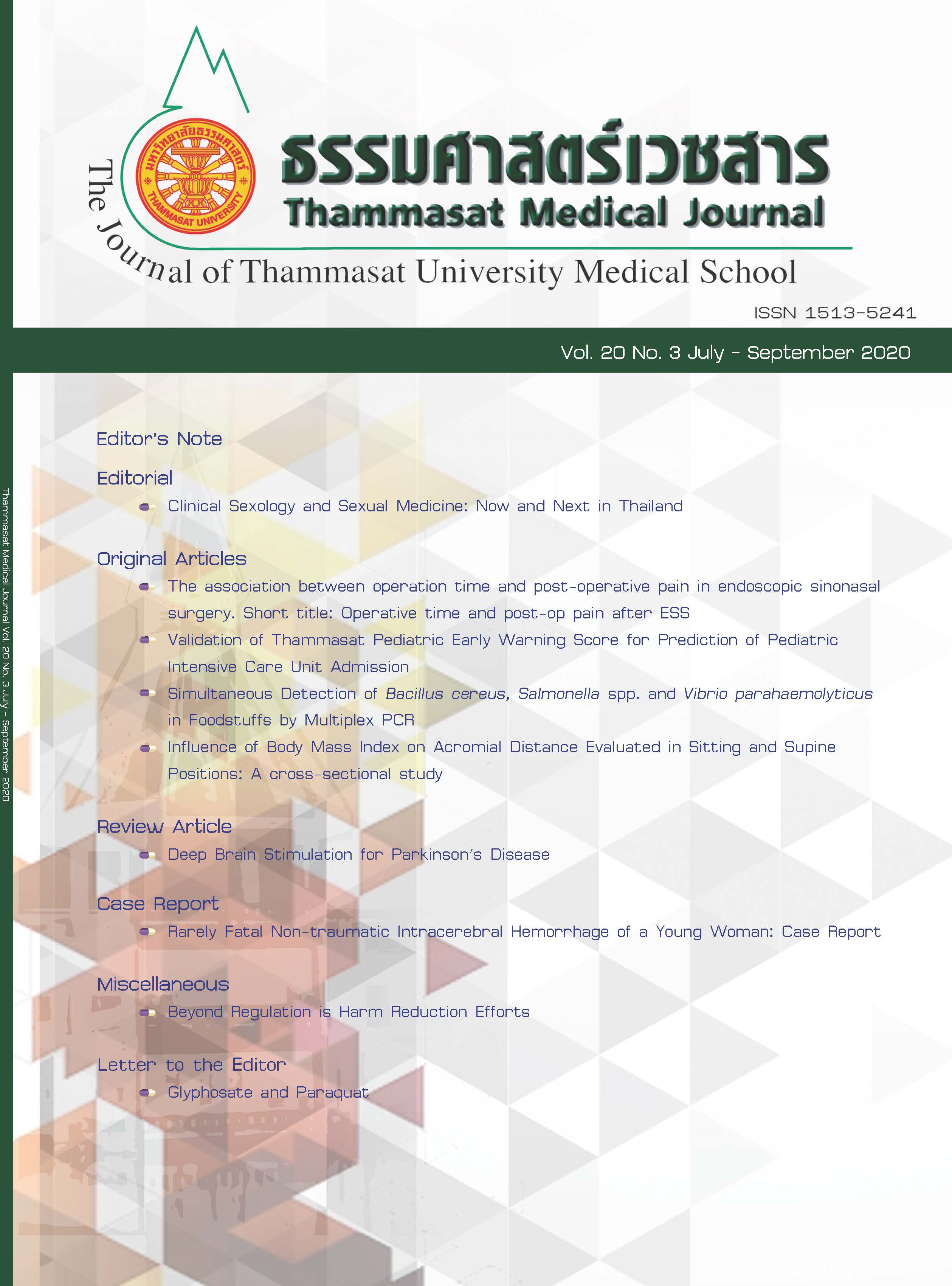Simultaneous Detection of Bacillus cereus, Salmonella spp. and Vibrio parahaemolyticus in Foodstuffs by Multiplex PCR
Keywords:
Multiplex PCR, Food-borne pathogen, Bacillus cereus, Salmonella, Vibrio parahaemolyticusAbstract
Introduction: Food-borne disease is a serious public health concern worldwide. Bacillus cereus, Salmonella spp. and Vibrio parahaemolyticus are the most common examples of food-borne pathogens. The rapid detection of food-borne pathogens is becoming increasingly critical for ensuring the safety of consumers.
Methods: Current study, the multiplex polymerase chain reaction (PCR) assay was employed for simultaneous detection of B. cereus, Salmonella spp. and V. parahaemolyticus in various foodstuffs. A total of 90 samples were collected from various foodstuffs in Pathumthani Province of Thailand.
Results: The overall contamination rates of B. cereus, Salmonella spp. and V. Parahaemolyticus for food samples collected in this study were 87.8% (79/90), 4.4% (4/90) and 31.1% (28/90), respectively. Most of the food samples were contaminated with one species of pathogen except salads. Approximately 41.7% of salads were contaminated with at least 2 species of pathogen. Among these, three food-borne pathogens were simultaneously detected in one salad sample.
Conclusion: This study suggests that the multiplex PCR method is suitable for rapid identification of these three food-borne pathogens in foodstuffs in order to reduce the risk of food-borne disease outbreaks.



